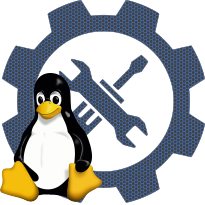DRBD Distributed Replicated Block Device support
modulename: drbd.ko
configname: CONFIG_BLK_DEV_DRBD
Linux Kernel Configuration
└─>Device Drivers
└─>Block devices
└─>DRBD Distributed Replicated Block Device support
In linux kernel since version 2.6.33 (release Date: 2010-02-24)
NOTE: In order to authenticate connections you have to select
CRYPTO_HMAC and a hash function as well.
DRBD is a shared-nothing, synchronously replicated block device. It
is designed to serve as a building block for high availability
clusters and in this context, is a "drop-in" replacement for shared
storage. Simplistically, you could see it as a network RAID 1.
Each minor device has a role, which can be 'primary' or 'secondary'.
On the node with the primary device the application is supposed to
run and to access the device (/dev/drbdX). Every write is sent to
the local 'lower level block device' and, across the network, to the
node with the device in 'secondary' state. The secondary device
simply writes the data to its lower level block device.
DRBD can also be used in dual-Primary mode (device writable on both
nodes), which means it can exhibit shared disk semantics in a
shared-nothing cluster. Needless to say, on top of dual-Primary
DRBD utilizing a cluster file system is necessary to maintain for
cache coherency.
For automatic failover you need a cluster manager (e.g. heartbeat).
See also: https://www.drbd.org/, http://www.linux-ha.org
If unsure, say N.
CRYPTO_HMAC and a hash function as well.
DRBD is a shared-nothing, synchronously replicated block device. It
is designed to serve as a building block for high availability
clusters and in this context, is a "drop-in" replacement for shared
storage. Simplistically, you could see it as a network RAID 1.
Each minor device has a role, which can be 'primary' or 'secondary'.
On the node with the primary device the application is supposed to
run and to access the device (/dev/drbdX). Every write is sent to
the local 'lower level block device' and, across the network, to the
node with the device in 'secondary' state. The secondary device
simply writes the data to its lower level block device.
DRBD can also be used in dual-Primary mode (device writable on both
nodes), which means it can exhibit shared disk semantics in a
shared-nothing cluster. Needless to say, on top of dual-Primary
DRBD utilizing a cluster file system is necessary to maintain for
cache coherency.
For automatic failover you need a cluster manager (e.g. heartbeat).
See also: https://www.drbd.org/, http://www.linux-ha.org
If unsure, say N.
